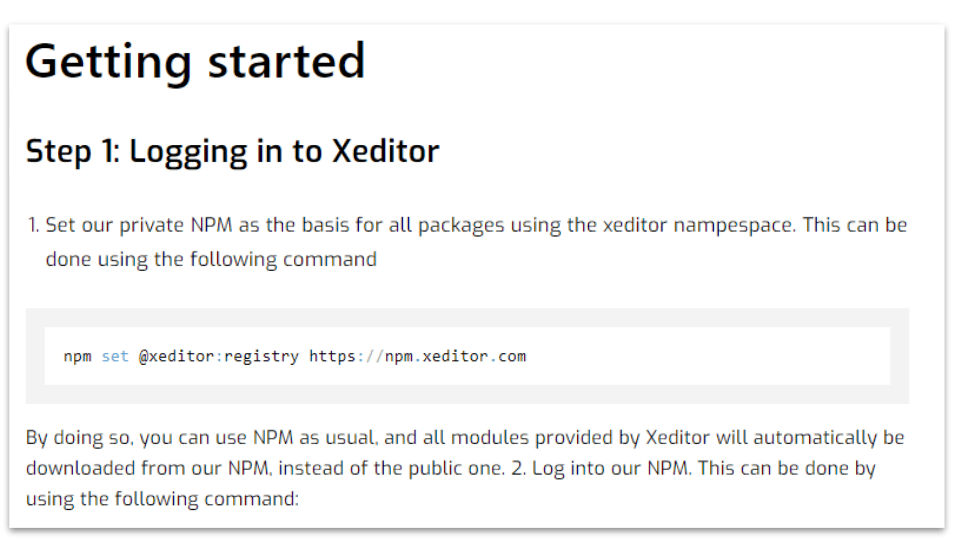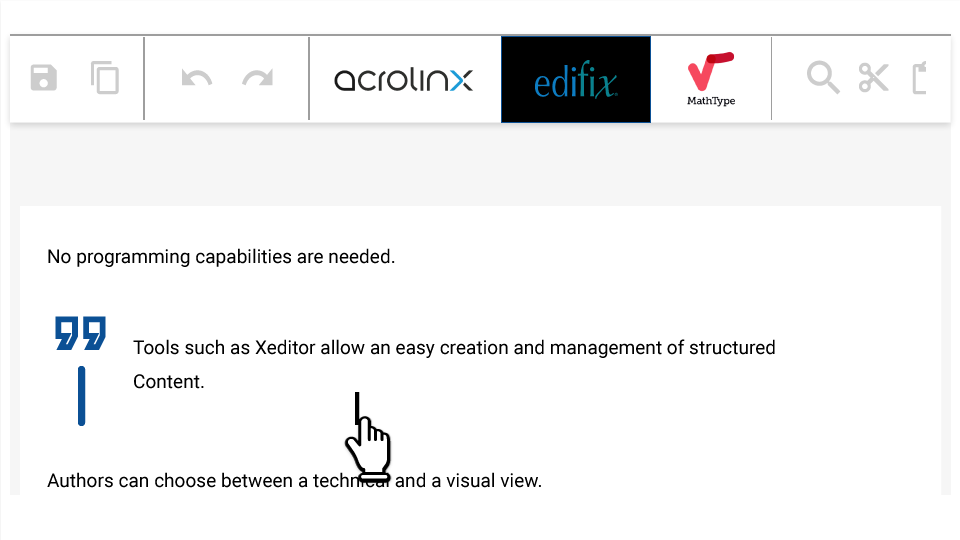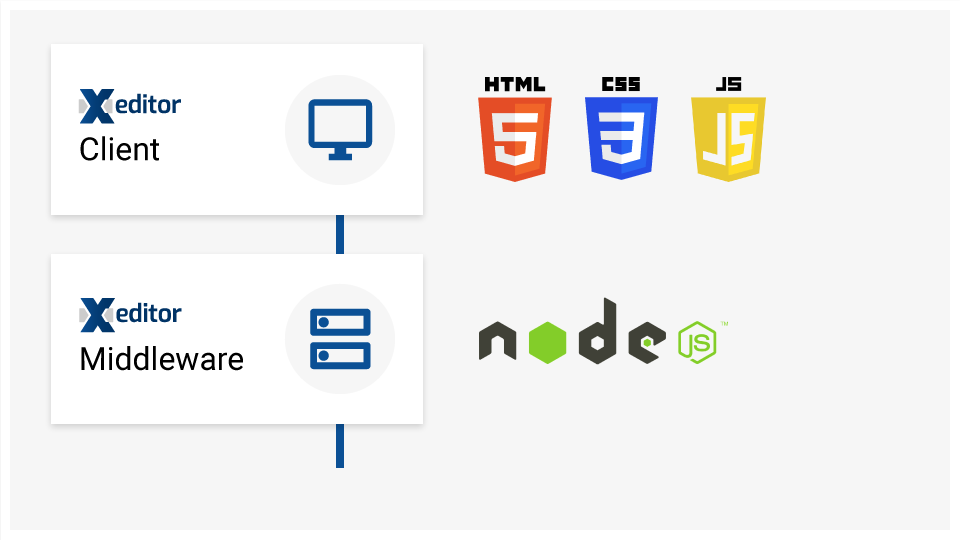Rapid integration
Xeditor is integrated and operated on a web server in the customer’s own system landscape. In order to create, edit, and store XML documents, Xeditor is connected to a backend – typically a CMS, a DAM, a database, or an editorial system such as Xpublisher – via its API.
Customer-managed integration is made possible with support provided by personally arranged workshops. This is supported by comprehensive documentation. Where preferable, Xpublisher can also perform the connection and setup. The company’s IT department is responsible for central control as well as updates and schema changes.


Individual customizations
Xeditor works with a variety of rule sets, including XSD and DTD, and has far more to offer than just standard functionality. Businesses can easily implement the system to suit their own requirements and match their corporate look and feel. What’s more, predefined schemas like DITA and JATS are available by default.
Both pagination and return behavior as well as instructions for authors can be defined for each XML element. Users can customize the graphic display of the user interface along with the toolbar and menu layout according to their preferences. This means that authors can work in a familiar environment without the need for costly specialized training.
With Xeditor, users have the option of creating their own plugins or using predefined plugins. In addition, the online XML editor provides solutions for special tasks. Xeditor provides interfaces for applications from all relevant third-party vendors. Acrolinx, for instance, helps to capture the brand’s unique tone of voice. Edifix automates the management of reference lists, while MathType supports the creation of multi-layered mathematical formulas.
Standard web technologies
Xeditor is designed based on state-of-the-art web technologies such as HTML, CSS, and JavaScript, and is connected to the system environment via its API. In addition, Node.js-based middleware can be used.
The deployment and distribution of the XML editor and all of the corresponding modules and plugins are provided and distributed via npm. Npm is the package manager for Node.js. As a result, updates of individual or multiple modules can be performed quickly and easily.

Drive to success
Numerous leading companies are already convinced by Xeditor and are benefiting from easy integration and usage.



Schedule your personal live demo now
Get to know all the features of the easy-to-integrate XML editor in a free live demo.
